Fat Transfer in Izmir
Search and Compare the Best Clinics and Doctors at the Lowest Prices for Fat Transfer in Izmir
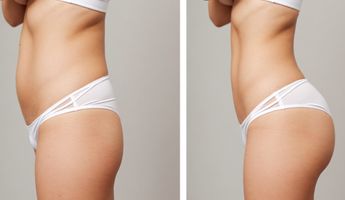
Find the best clinics for Fat Transfer in Izmir
With Medijump you can browse 4 facilities offering Fat Transfer procedures in Izmir. The cheapest price available is $542 in Istanbul
Fat Transfer in Turkey
Price: $ 542
Fat Transfer in Istanbul
Price: $ 542
Fat Transfer in Antalya
Price: $ 1,911
Thailand offers the best prices Worldwide
Price: $ 167
Mustafa Durgun Clinic, located in Karsiyaka, Izmir, Turkey offers patients Fat Transfer procedures among its total of 22 available procedures, across 3 different specialties. The cost of a Fat Transfer procedure ranges from $2,000 to $3,000, whilst the national average price is approximately $1,811. All procedures and treatments are undertaken by just a small team of specialists, with 2 in total at the Clinic, and they have multiple recognized accreditations, including: TPCD - Turkish Society of Plastic Reconstructive and Aesthetic SurgeonsEPCD - Aesthetic Plastic Surgery AssociationRMCD - Turkish Society for Reconstructive Microsurgery
From 2 verified reviews
Lilian Keith, 01 January 1970
I was satisfied with the result. Thanks to Dr. Caghan and his team, very professional and helpful.
Clinic Center - Izmir, located in Karsiyaka, Izmir, Turkey offers patients Fat Transfer procedures among its total of 17 available procedures, across 1 different specialties. Currently, there's no pricing information for Fat Transfer procedures at Clinic Center - Izmir, as all prices are available on request only, whilst the national average price is approximately $1,811. There are many specialists available at the Clinic, with 5 in total, and they have multiple recognized accreditations, including: EBOPRAS - European Board of Plastic Reconstructive and Aesthetic SurgeryTTB - Turkish Medical AssociationTPCD - Turkish Society of Plastic Reconstructive and Aesthetic SurgeonsEPCD - Aesthetic Plastic Surgery Association
Kordon Medical Center, located in Karsiyaka, Izmir, Turkey offers patients Fat Transfer procedures among its total of 22 available procedures, across 2 different specialties. Currently, there's no pricing information for Fat Transfer procedures at Kordon Medical Center, as all prices are available on request only, whilst the national average price is approximately $1,811. There are many specialists available at the Hospital, with 6 in total, and they are accredited by EPCD - Aesthetic Plastic Surgery Association
Compare Before & After Photos of _procedure_photos.phpFat Transfer


Front view
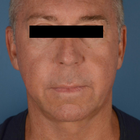
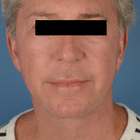
Front view
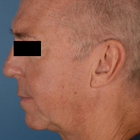
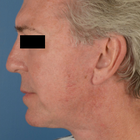
Full-side view
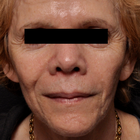
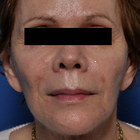
Front view
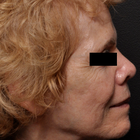
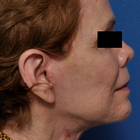
Full-side view
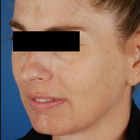

Half-side view
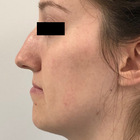
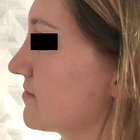
Full-side view
WHY US?
At Medijump, we're making medical easy. You can search, compare, discuss, and book your medical all in one place. We open the door to the best medical providers worldwide, saving you time and energy along the way, and it's all for FREE, no hidden fees, and no price markups guaranteed. So what are you waiting for?

Free

Best Price

Widest Selection

Risk-Free
What you need to know about Fat Transfer in Izmir
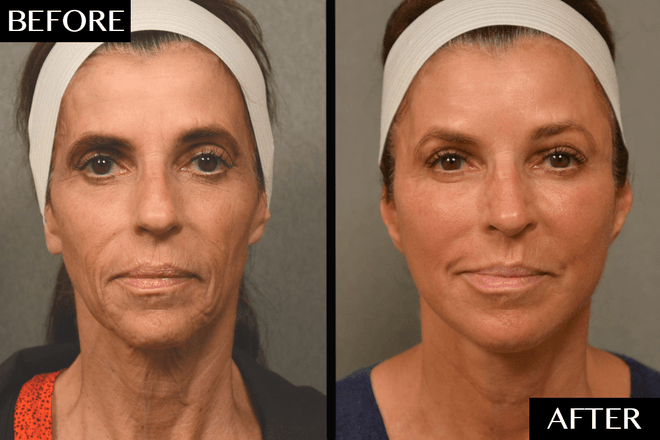
Also known as Fat Harvesting, Fat Grafting, Fat Injections, Lipofilling, Fat Transfer is a cosmetic surgery involving the movement of fat from one part of the body to another. During this procedure, your own fat will be used to fill in irregularities and grooves, primarily in the face, around the temples, eyes, chin, and lips. It can also be used to enhance the appearance of the breast, feet, hips, buttocks, and hands. The procedure is now a well-established technique that was perfected in the early nineties.
Some of the most common aesthetic indications for undergoing fat transfer / lipofilling include sunken cheeks, the disappearance of fat from the cheekbones, deep grooves running from the nose to the corners of the mouth, and in some instances of lines between the lower eyelids and the cheek. It is also one of the most common methods used for lip enhancement. In addition, lipofilling can be used to smooth out all types of irregularities such as those resulting from poorly performed liposuction or injuries.
The necessary fat is obtained by a limited liposculpture through one or several 3 to 5 mm incisions. It is normally taken from the abdomen or inner thigh. The aspirated fat is processed by centrifuging, filtering or rinsing. Pure liquid fatty tissue ready for injection is the result. The fat is then injected where needed. The fat is evenly distributed into the area by injecting minute amounts in the tissues so that the injected fat is well surrounded by healthy tissue. This ensures that the transplanted fat remains in contact with the surrounding tissues that must supply it with oxygen and nutrients.
What is the cost of Fat Transfer in Izmir?
Being aware of the costs linked to the Fat Transfer pricing in Izmir is vital for efficient budgeting and organizing. Pricing can differ greatly conditional to numerous things, such as the intricacies of the operation, the quantity of fat transferred, the surgeon's skill level, and the clinic's place. Conducting meticulous research and obtaining diverse quotations from multiple providers before settling is advisable.
Bear in mind, the Fat Transfer is generally deemed a vanity procedure, thus, it is not typically insured by health insurance providers. Exceptions may exist if the operation holds a medical necessity, like reconstruction operations post-mastectomy or injury. It's always advantageous to liaise with your insurance provider to grasp the specific details of your coverage and to ascertain the possible out-of-pocket expenses you could face.
What does a Fat Transfer Procedure Involve?
Consisting of two completely different procedures, extraction of fat called liposuction and transfer of fat through injections. Both the donor and recipient sites are sedated by giving local anesthesia. After this, fat is harvested through injections from the sites where adipocytes are tightly packed, such as the buttocks or abdomen. However, the fat present in lateral sides of the thighs and lower abdomen is also good fat as it contains a larger concentration of adipose-derived stem cells. These stem cells promote angiogenesis and adipogenesis at the recipient site - multiple injections are used to do this.
The material extracted is centrifuged, sedimented and filtered for excessive liquid and pure fat cells are injected just below the skin. This is the most difficult step of fat transfer to inject fat evenly in different layers of recipient tissue. Cannulas and syringes of different sizes are used to do this. In the case of breast augmentation, multiple fat injections are applied to the breasts. It is ensured that these fat cells are injected near a blood vessel so the cells don't die due to a lack of nutrition. Proper nutrition is needed for the cells to survive and grow.
What are the types of Fat Transfer?
Facial fat transfer: If you have facial creases, such as laugh lines, smile lines, and crow’s-feet, fat can be removed from your abdomen, thighs, or other areas and be injected into your face. Acne scars and sunken areas of the face, lips, and cheeks can also be filled in. Your plastic surgeon can even use grafted fat to minimize lines between your nose and mouth, correct skin depressions or indentations and minimize forehead wrinkles. (Facelift, Lip Augmentation)
Breast augmentation: Fat transfer breast augmentation essentially uses liposuction to take fat from other parts of your body and inject it into your breasts. This is a breast augmentation option for women who are looking for a relatively small increase in breast size and would prefer natural results.
Breast implants plus fat grafting: If your breast shape needs optimizing during a breast implant procedure, fat grafting can be useful. If you have residual breast irregularities after undergoing breast augmentation with implants, the irregularities can be filled in with fat to produce a smooth contour and an optimal shape.
Breast reconstruction with fat grafting: If you have breast defects following lumpectomy for breast cancer, fat grafting is an effective method for filling in these defects. Fat grafting is also an option for total breast reconstruction following mastectomy; however, to achieve sufficient breast volume, this is usually a multistage process that requires at least two to four sequential fat grafting procedures.
Buttock augmentation with fat grafting: Many people who desire a fuller, more rounded buttock will opt for a “Brazilian butt lift” which uses fat transfer to provide a more curvaceous buttock without the use of an implant. Liposuction is commonly used to both sculpt the surrounding area and collect the autologous fat to be injected.
Hand rejuvenation with fat grafting: Fat grafting into your hands is effective for adding volume, “plumping up” wrinkled areas, covering underlying vessels and tendons and improving the quality of your skin over time.
How Long Should I Stay in Izmir for a Fat Transfer Procedure?
As an outpatient procedure, just a couple of hours are needed depending upon the amount of fat that is to be removed and transferred. You can leave the hospital on the same day or sometimes an overnight stay is advised, and in some cases, more than one session is needed. You should stay in Izmir for at least 10-14 days after being discharged for regular check-ups. During this period, your health and results of the procedure are monitored by your surgeon.
The precise duration of your visit will primarily hinge on your personal situation, including the scope of your surgery, your total health condition, and your body's healing capability. It is always wise to engage in open dialogue with your surgeon about the anticipated period of your stay.
What's the Recovery Time for Fat Transfer Procedures in Izmir?
The recovery period is different for different areas of your body. After a buttock augmentation, you have to sleep on your stomach or keep standing for at least 4 weeks. Because sitting can dissipate the fat. The shape of the augmented area might appear irregular initially, it will get a proper contour after some time. There will be moderate swelling and bruising at both the donor and the recipient sites for 2 weeks. Your face might appear fat and plump after fat grafting but it will settle down before long. You might suffer from moderate pain for a few days. Pain killers are given to deal with this. Almost 6 months are required for the results to fully show.
What sort of Aftercare is Required for Fat Transfer Procedures in Izmir?
Things to consider:
- Regular checkups after being discharged.
- Take your medicines regularly, as and when prescribed by the doctor. Avoid self-medication.
- Follow a healthy diet plan for a better recovery.
- Ensure the presence of a friend or family member with you in the early few days to help you with house chores.
- Avoid excessive movement during the early few weeks and do not sit on your butts in case of butt fat transfer because it can dissipate the fat rendering it ineffective.
- Look for the signs of blood clot formation, excessive bruising, etc. Visit your doctor immediately if you find any abnormal thing.
What's the Success Rate of Fat Transfer Procedures in Izmir?
When exploring any health-related process, the success ratio becomes a key element to consider. The efficiency of the Fat Transfer in Izmir hinges upon various aspects such as proficiency and expertise of the surgeon, the health condition of the individual, and compliance to the guidelines of care after the operation. Fat transfer has been gaining fame due to its dual advantage of eliminating unnecessary fat from the body and accentuating preferred areas.
The outcomes of Fat Transfer show promising persistency. Many people have enjoyed pleasing results that lasted for a long span of time. Fat transfer for breast augmentation has increased by 76% in 2016 while for butt augmentation, a 26% increase has been witnessed. This approach also enjoys a commendable success ratio when it comes to patient satisfaction, with some researches revealing satisfaction percentages reaching up to 85%. It's however crucial to hold realistic anticipations, since factors like age, weight changes, and general health can sway the results. Regular consultations with your health provider are crucial for monitoring improvements and promptly dealing with any arising issues.
Are there Alternatives to Fat Transfer Procedures in Izmir?
Fat grafting is an expensive technique as it consists of 2 different procedures. Following are some alternatives to it:
- Dermal fillers: these are given through injections to make your skin look plump. Sunken cheeks can be effectively corrected through this technique.
- Breast implants: for small breasts, implants are an alternative to fat grafting. A silicone implant is inserted into your breasts to increase their size.
- Breast reconstruction: cancer patients, who went through mastectomy can get their bust back by reconstructive surgery.
- Tummy tuck: This procedure tightens your abdominal muscles giving them a tighter and flattened appearance.
- Liposuction: excessive fat is removed from different parts of your body through liposuction. Your tummy looks flatter and you look smarter after this procedure.
- Cheek augmentation: in this technique, silicone implants are inserted into your cheeks to make them look bigger and plump.
All of the techniques mentioned above involve only one procedure.
What Should You Expect Before and After the Procedure
Understanding the process before and after undergoing the Fat Transfer is crucial to easing worries and ensuring a successful outcome. Before the process, your doctor will provide in-depth guidance on the requisite preparations. This might involve abstaining from certain drugs or supplements that may increase bleeding, and possibly, fasting if general anesthesia is planned. Thorough medical check-up and health evaluation will be performed to lower any prospective risks. In particular instances, your doctor may advocate lifestyle alterations such as quitting smoking because it can hinder the recovery process.
Following the Fat Transfer, patients might have minor swelling and bruising, but these usually recede in a few weeks. Aches and discomfort can be effectively controlled with prescribed medicine. Though recovery time varies among individuals, most return to work and resume everyday activities within one to two weeks. Your doctor will provide detailed instructions for a post-procedure care routine, possibly involving wearing pressure garments and regular review meetings to track healing and progress.
What are Potential Risks of Fat Transfer?
Possible complications can include:
- Blood clot formation, infections, and ulmonary embolism leading to the failure of fat grafting
- Absorption of the transferred fat by the body leading to asymmetry or irregularities in the treated area
- The formation of oil cysts or calcification which can interfere with radiological imaging
Whilst the information presented here has been accurately sourced and verified by a medical professional for its accuracy, it is still advised to consult with your doctor before pursuing a medical treatment at one of the listed medical providers
No Time?
Tell us what you're looking for and we'll reachout to the top clinics all at once
Enquire Now

Popular Procedures in Izmir
Prices Start From $26

Prices Start From $113

Prices Start From $208

Prices Start From $275

Prices Start From $758

Prices Start From $5

Recommended Medical Centers in Izmir for Fat Transfer

- Interpreter services
- Translation service
- Religious facilities
- Medical records transfer
- Medical travel insurance
- Health insurance coordination
- TV in the room
- Safe in the room
- Phone in the room
- Private rooms for patients available

- Interpreter services
- Translation service
- Religious facilities
- Medical records transfer
- Medical travel insurance
- Health insurance coordination
- TV in the room
- Safe in the room
- Phone in the room
- Private rooms for patients available

- Interpreter services
- Translation service
- Religious facilities
- Medical records transfer
- Medical travel insurance
- Health insurance coordination
- TV in the room
- Safe in the room
- Phone in the room
- Private rooms for patients available

- Interpreter services
- Translation service
- Religious facilities
- Medical records transfer
- Medical travel insurance
- Health insurance coordination
- TV in the room
- Safe in the room
- Phone in the room
- Private rooms for patients available

- Interpreter services
- Translation service
- Religious facilities
- Medical records transfer
- Medical travel insurance
- Health insurance coordination
- TV in the room
- Safe in the room
- Phone in the room
- Private rooms for patients available

- Interpreter services
- Translation service
- Religious facilities
- Medical records transfer
- Medical travel insurance
- Health insurance coordination
- TV in the room
- Safe in the room
- Phone in the room
- Private rooms for patients available

- Interpreter services
- Translation service
- Religious facilities
- Medical records transfer
- Medical travel insurance
- Health insurance coordination
- TV in the room
- Safe in the room
- Phone in the room
- Private rooms for patients available

- Interpreter services
- Translation service
- Religious facilities
- Medical records transfer
- Medical travel insurance
- Health insurance coordination
- TV in the room
- Safe in the room
- Phone in the room
- Private rooms for patients available

- Interpreter services
- Translation service
- Religious facilities
- Medical records transfer
- Medical travel insurance
- Health insurance coordination
- TV in the room
- Safe in the room
- Phone in the room
- Private rooms for patients available

- Interpreter services
- Translation service
- Religious facilities
- Medical records transfer
- Medical travel insurance
- Health insurance coordination
- TV in the room
- Safe in the room
- Phone in the room
- Private rooms for patients available
Fat Transfer in and around Izmir
About Izmir
Izmir is a Turkish metropolitan city and is the third-largest city and situated on the western coast. It is one of the more popular destinations that plays host to an increasing number of medical tourists. The city’s geographical location is one of its biggest advantages as for centuries; Izmir is a trading town on the Mediterranean.
Numerous international travelers journey away from their native land towards the vibrant city of Izmir, propelled by the quest for superior healthcare solutions either for their personal welfare or that of their kin. Their decision often revolves around the advanced and specialized medical treatment they desire, either being non-existent or scarce within their nation or the exorbitant price attached to such healthcare services becomes an overwhelming burden to bear within their homeland.
Today, Izmir is witnessing a significant upsurge in the influx of medical tourists. Analyzing the city's patient data tells us a compelling narrative of an increasing trend of visitors seeking specialized treatments such as dentistry, fertility, and psychiatry. Moreover, it is not just the routine healthcare services drawing them in, but also the availability of expert and advanced care for rare medical conditions, making Izmir an appealing choice.
Popular Areas in Izmir
On initial contact, as your plane touches the tarmac in Izmir, you may be beguiled into perceiving this city as just another tranquil, picturesque hamlet exhibiting a leisurely rhythm of life. It wouldn't take long, however, for you to realize that the serene facade conceals a teeming life of variety and vivacity, a couple of hours is all it takes to reveal the city's multifaceted persona.
As a historic and significant city of Turkey, it's really no surprise that tourists get swept away by the grand scale and richness of age-old landmarks and Ottoman structures found across Izmir.
One key attraction is the vibrant Izmir Agora open-air museum that sits in the city core. The first glimpse might trick you into believing the city grew around it. Bordered by scenic hills, bustling marketplaces, towering structures, luxury apartments, and a serene yet sandy-free coastline, this place truly comes alive.
Alsancak is the heart of the city and the safest place in the inner city for tourists with lots of shopping opportunities if you don't want to go to any of the big shopping malls, there are also several decent places for eating, although nothing too fancy as they are mostly café style place, the prices are also slightly higher than other parts of Izmir.
The closest beaches are 50 miles west of the city. There is an excellent choice of superb beaches such as Ilıca (a long wide beach of pale sand where the water is very warm due to under-sea thermal activity), and just a short distance from Çeşme itself, Altınkum (with much cooler water),
Weather and Climate in Izmir
Izmir enjoys the characteristic Mediterranean climate that one might anticipate. Winter days bring a chill to the air, while the summer season is heralded by bright, sunny days.
- The winter season is from December to mid of March. The average temperature ranges from 7-10 degrees centigrade and January is the coldest month. The wettest month is December with an average of 140mm of rain.
- Spring is from Mid-March to May. This is the best time of the year to visit Izmir. It is advisable to plan ahead for your trip and book your flights and hotel reservations. Since this is the most pleasant season in Izmir, hotel booking rates are its highest and it can be difficult to get a reservation.
- The summer season is from June to September. The season is hot and dry. Humidity is not too high because of the influence of the Mediterranean Sea. The maximum temperature recorded is around 40 degrees centigrade.
- Autumn season is warm at the beginning of September. There is a high chance of rain and snow towards the end of November.
Getting around in Izmir
Getting around Izmir is a breeze, with the majority of the transportation systems being government-operated and widely hailed as the most effective means of commute. Boasting cleanliness and disciplined planning, Izmir is a city designed for comfort. Strategically placed taxi stands can be found at major locations, ensuring swift public convenience.
The city's well-coordinated metro system is adept at connecting Izmir's northern and southern ends through two distinct lines, effectively covering a majority of the cityscape. There's even a railway station conveniently located at the airport. Known as the Izmir Metro, this transport service provides an exceptionally convenient link between the airport and the city. Not to be overlooked is the city's sea transportation; public ferries can whisk you across the waters at very fair prices.
Tourist Visas in Izmir
Visa requirements for Izmir, Turkey:
Citizens of 55 countries, including all countries in the European Union, do not require a visa to enter Izmir, Turkey. Citizens of these countries can stay in Turkey for up to 90 days without a visa.
Citizens of all other countries must obtain a visa before entering Turkey. Visas can be obtained online or at a Turkish embassy or consulate. The visa application process is relatively straightforward and takes about 20 minutes to complete. You will need to provide your passport information, travel dates, and contact information. You will also need to upload a digital photo of yourself.
Once you have submitted your application, you will receive an email confirmation. You should then receive your visa within 5 to 10 business days.
Additional Information
- Local Currency: Is the Turkish Lira. 100 US dollars will yield 582.82 Turkish liras. It is best to carry the local currency within the city even though a lot of establishments like shops and hotels will accept payments in Euros and Dollars.
- Money and Payments: Most Businesses will accept all the major cards at Izmir. Some restaurants even accept Premier Dining passes. Tipping is prevalent at ten percent of the service charge.
- Local language: Most of the population speaks Turkish and Kurdish. English is understood and basic forms of English will be conversed in. Turkish is compulsorily taught at school, also a high number of people also speak Arabic.
- Culture and Religion: Turkey is a secular country and it has no official religion. Having said this, a massive 99 percent of the population identify themselves as Muslims. While the remaining 0.2 percents are Christians and 0.8 percent from other religions.
- Public Holidays: Izmir celebrates the Gregorian New Year day and May Day with great enthusiasm. Government offices remain closed on other state holidays such as the Izmir Republic Day that falls on the 28th and 29th of October every year. 23rd of April is also an important date when Izmir celebrates its National Sovereignty Day and Children’s Day together.
Popular Searches
- Plastic Surgery in Thailand
- Dental Implants in Thailand
- Hair Transplant in Thailand
- Breast Augmentation Thailand
- Gastric Sleeve in Thailand
- Gender Reassignment Surgery in Thailand
- Laser Hair Removal in Bangkok
- Botox in Bangkok
- Dermatology in Bangkok
- Breast Augmentation in Bangkok
- Coolsculpting in Bangkok
- Veneers in Turkey
- Hair Transplant in Turkey
- Rhinoplasty in Turkey
- Stem Cell Therapy in Mexico
- Rhinoplasty in Mexico
- Liposuction in Mexico
- Coolsculpting in Tijuana
- Rhinoplasty in Korea
- Scar Removal in Korea
- Gastric Sleeve in Turkey
- Bone Marrow Transplant in India
- Invisalign in Malaysia
- Plastic Surgery in the Dominican Republic
- Tummy Tuck in the Dominican Republic
- Plastic and Cosmetic Surgery in Poland
- Rhinoplasty in Poland
- Hair Implant in Poland
- Dental Implants in Poland
- IVF in Turkey



